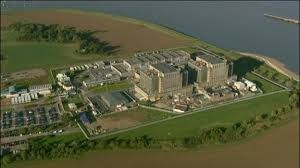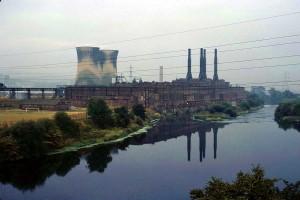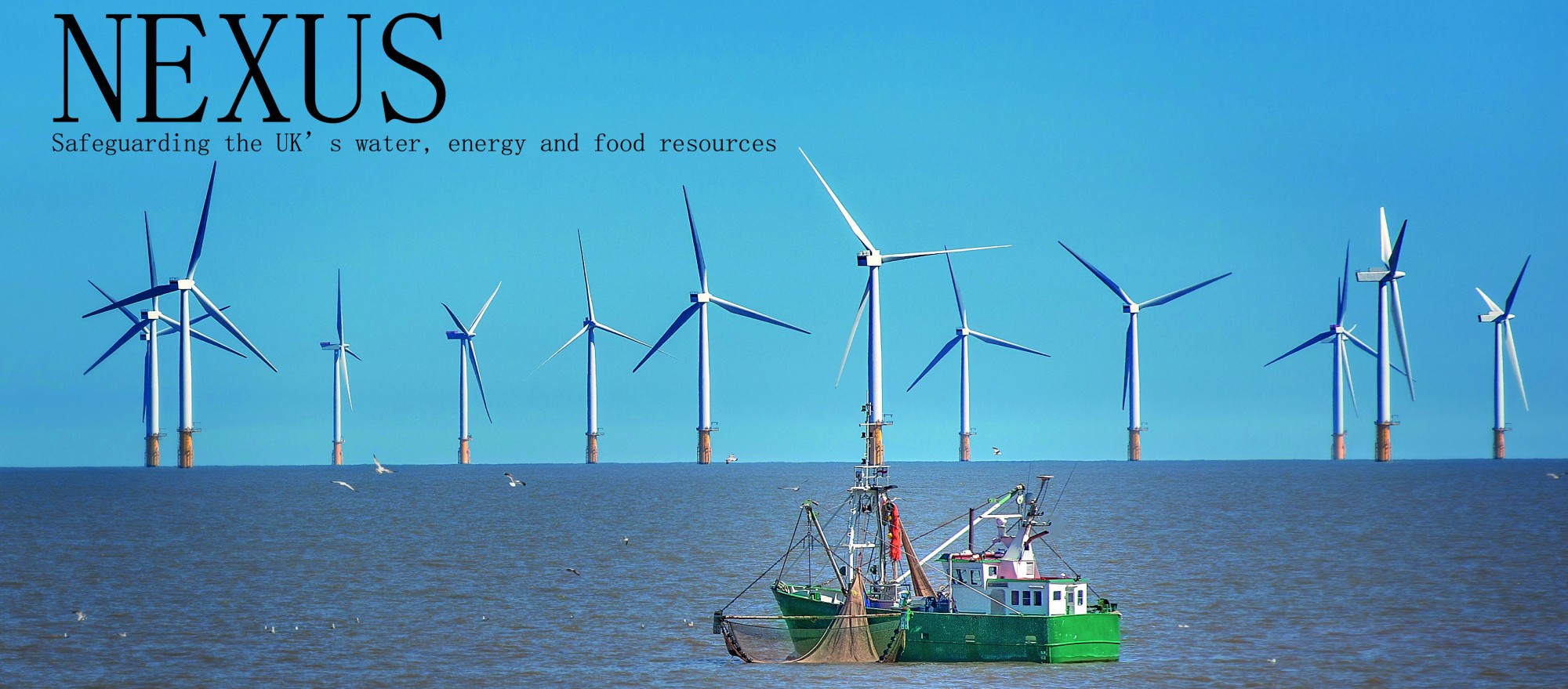This project will quantify the response of animals that form the basis of marine Food resources (finfish and shellfish) to the shocks associated with development of electricity (Energy) generating infrastructure (e.g. power stations, small-scale river hydropower, marine turbines) that uses vast amounts of Water to do so. By taking a reductionist approach to return to fundamental first principles shocks will be experimentally induced at a fine scale by altering hydrodynamics. Data on aquatic organism response to hydrodynamic conditions encountered at infrastructure will inform an integrated agent based model (ABM) to predict the response of the food resource to alternative infrastructure projects at large scales. A planning decision support tool created will enhance resilience of the system by reducing or mitigating (absorbing) future shocks.
Quantification of response of aquatic organisms to hydrodynamic signals:
 The behavioural response of fish of relevance as a food resource to near field hydrodynamics will be quantified. This work will benefit from the complementary skills sets of specialists in fluid dynamics and behavioural ecology. The response of organisms to alternative treatments of differing hydrodynamic conditions covering a relevant range of Reynolds numbers, turbulence intensities, and turbulence scales will be tested in large-scale flume facilities. Hydrodynamic metrics of ecological interest will be obtained using combinations of flow visualisation and acoustic Doppler velocimetry. Organism response to key hydrodynamic shocks will be measured.
The behavioural response of fish of relevance as a food resource to near field hydrodynamics will be quantified. This work will benefit from the complementary skills sets of specialists in fluid dynamics and behavioural ecology. The response of organisms to alternative treatments of differing hydrodynamic conditions covering a relevant range of Reynolds numbers, turbulence intensities, and turbulence scales will be tested in large-scale flume facilities. Hydrodynamic metrics of ecological interest will be obtained using combinations of flow visualisation and acoustic Doppler velocimetry. Organism response to key hydrodynamic shocks will be measured.
An automated particle tracking system will allow organism distribution and movement patterns to be quantified relative to simultaneously measured flow fields. Interrogation of trajectories relative to flow patterns will enable the position of the animal at the point of exhibiting a behavioural response to be identified. Levels of activity and delay, defined as frequency and velocity of movement versus frequency and duration of station maintenance, and preference/avoidance, will be quantified. This information will enable the development of a rule-base for assigning behavioural response criteria to the governing fluid dynamics to be incorporated in the ABM developed.
Development of hydrodynamic models for case study scenarios:
Simulations of the hydrodynamics using parameters relevant to the distribution and movements of the species of interest will be performed. For specific case study sites selected in collaboration with industry partners, 2D free-surface hydrodynamic models will be developed to provide information on flow velocities, velocity gradients, depths, bed shear stresses and turbulence in river and estuarine locations. The models will predict changes in the key hydrodynamic parameters that arise from incorporating infrastructure that are of interest to industry. These will be investigated taking into consideration a range of climate and other environmental change scenarios, particularly shocks of extreme events related to flooding and drought.
Integration of the hydrodynamic model with an ABM to predict distribution and movement of aquatic organisms:
An ABM will be constructed to facilitate understanding of how swimming and reaction is influenced by the hydrodynamics created at river infrastructure (focusing on traditional power stations, low carbon renewable energy sites e.g. marine turbines and small-scale river hydropower projects). Tracks of animals developed will be combined with an empirically based fine scale 2-D hydrodynamic models of the experimental settings and used to replicate the movement of the target species. The models will be used to derive the powered swimming components of the movements and to categorise intentional behavioural changes  as opposed to movement as a result of advection. Dynamic visualisations of tracks and movement components will be constructed to enhance understanding of unobserved cues or proximal stimuli that might not have been evident without them. The behavioural rules derived for responses to hydrodynamic cues will be used to construct simulated tracks and statistically compared with those observed through implementation of an acoustic telemetry study for key target species at a small-scale hydropower case study site. The information obtained will be used to develop and validate an integrated hydrodynamic ABM of behaviour to capture the impacts of the hydrodynamics at biologically relevant scales.
as opposed to movement as a result of advection. Dynamic visualisations of tracks and movement components will be constructed to enhance understanding of unobserved cues or proximal stimuli that might not have been evident without them. The behavioural rules derived for responses to hydrodynamic cues will be used to construct simulated tracks and statistically compared with those observed through implementation of an acoustic telemetry study for key target species at a small-scale hydropower case study site. The information obtained will be used to develop and validate an integrated hydrodynamic ABM of behaviour to capture the impacts of the hydrodynamics at biologically relevant scales.
Integration of socio-economic and governance parameters:
During development of the integrated ABM reality checks and feedback will be provided by the stakeholders as to the economic costs and benefits of different infrastructure planning options. Project partners, RWE Npower, will share data on fish mortality at water intakes which along with projected costs of mitigation (e.g. screening) will feed into socio-economic modelling of alternative options. Further, governance structures in the beneficiary organisations will be modelled and potential impediments to uptake identified to enhance development of methods to explain the approach adopted and dissemination of outputs.
